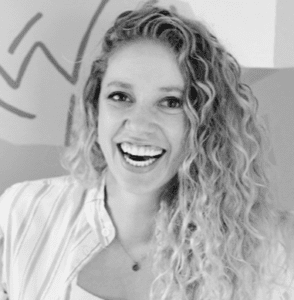Return to Learn with The Art of Education University
Asking students to create abstract art and getting them to really “feel” it can be a challenge. Initially, you might say their hearts are just not in it. Whether or not you have created some version of abstract art with your students, making playful abstractions is a great way to enhance social and emotional learning (SEL) skills, experiment with different art materials, and ultimately have fun creating therapeutic art.
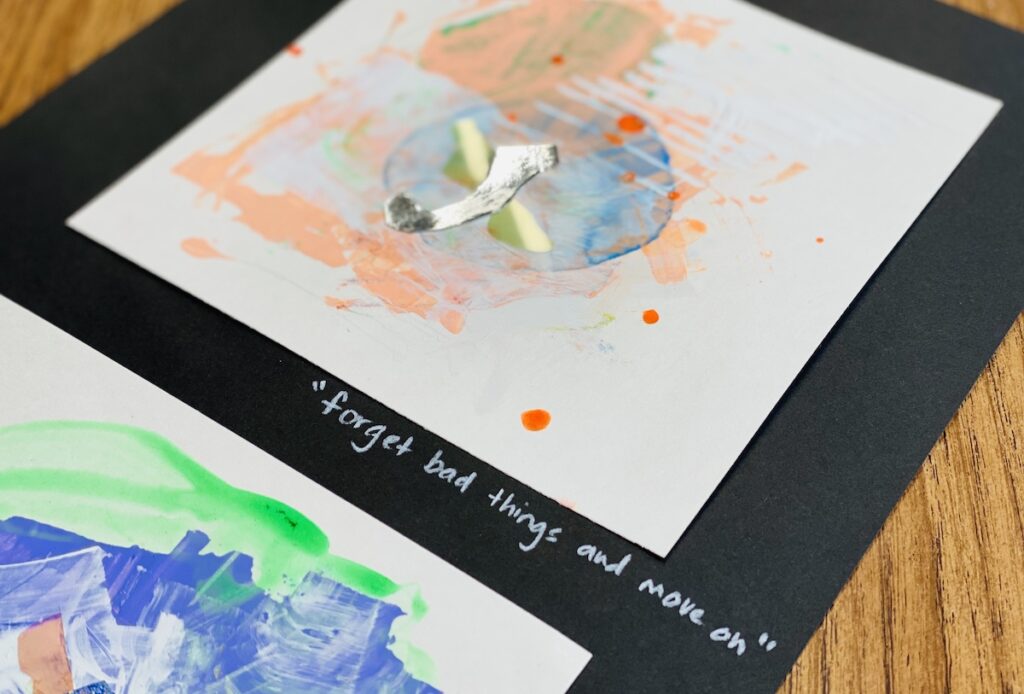
What is SEL?
Social and emotional learning (SEL) is the process through which children and adults understand and manage emotions, set and achieve positive goals, feel and show empathy for others, establish and maintain positive relationships, and make responsible decisions.
With such a large emphasis on SEL this school year, this art lesson is sure to engage you and your students on their journey toward self-expression.
With such a broad definition, abstract art can be tricky for young artists to wrap their brains (and hearts) around. Consider, however, introducing your students to the act of creating intuitive art. Intuition is defined as a thing someone knows or considers likely from an instinctive feeling instead of conscious reasoning.
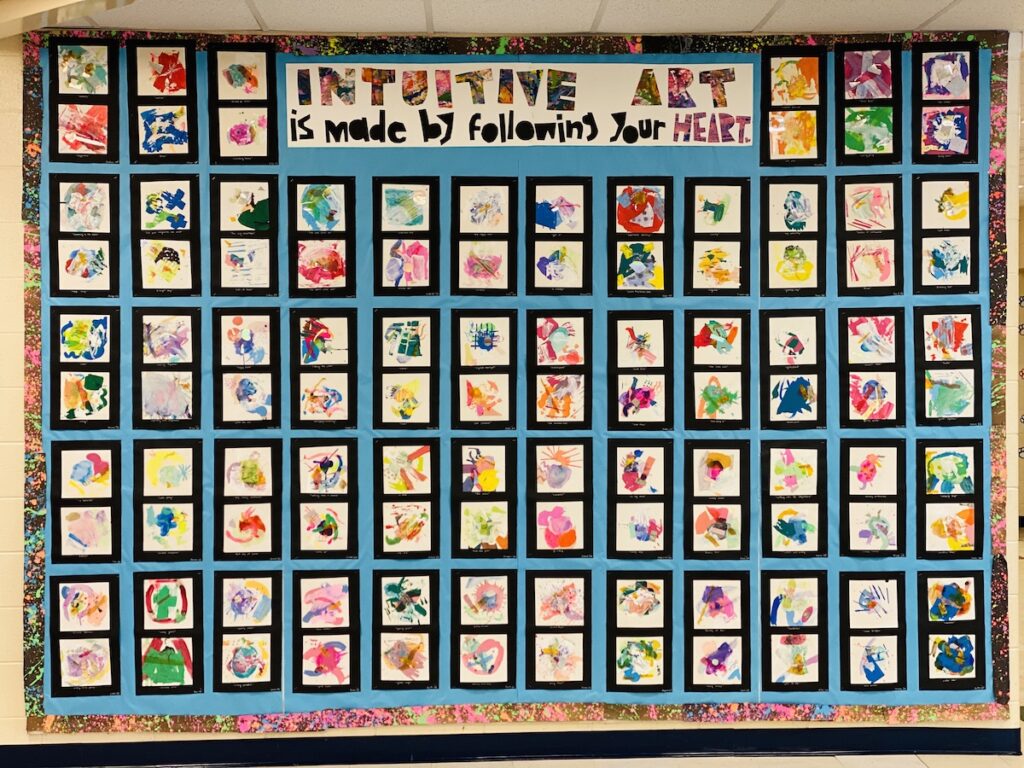
Our students interpreted this process as “Intuitive art is made by following your heart.”
In the fall of 2019, our 2nd-grade students were lucky enough to study the work of local Wisconsin artist, Katherine Simdon. We always love inviting visiting artists into our classroom to give students experiences with all types of creative people. If you are unable to arrange for an in-person artist visit, consider a virtual “visiting artist” chat for your students.
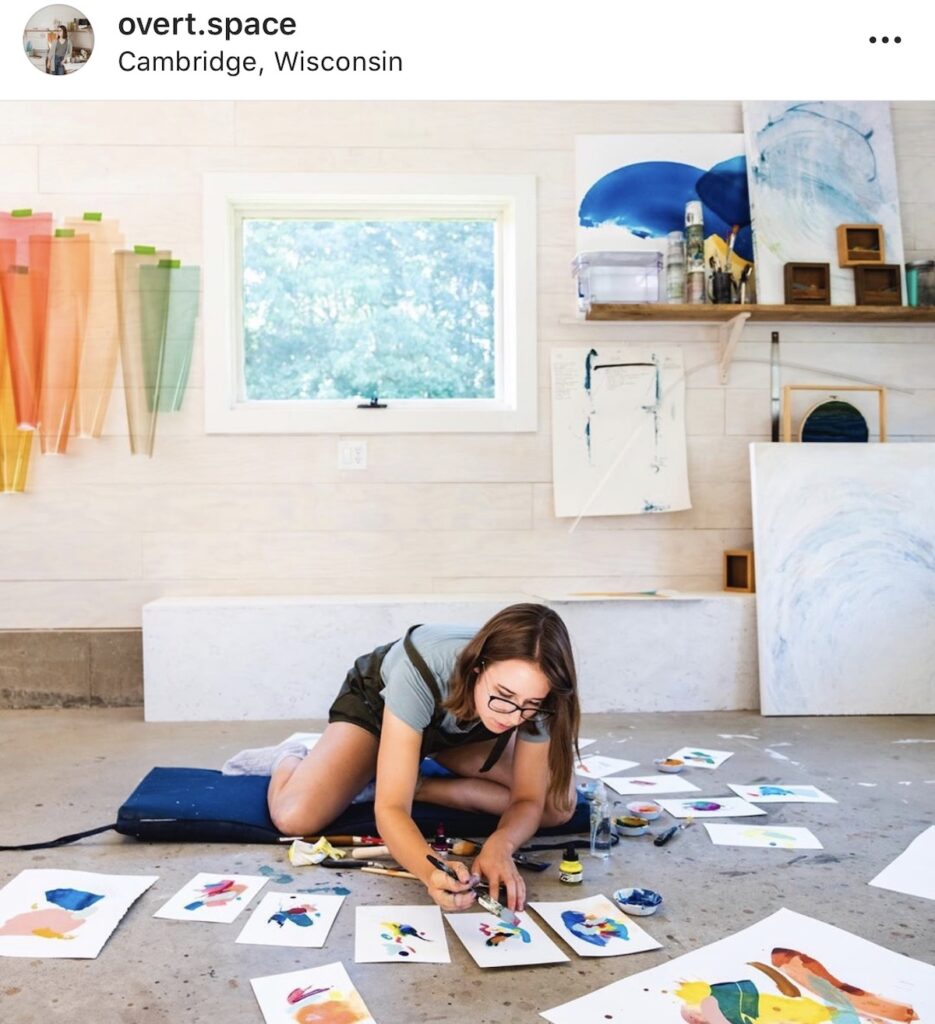
On the first day of Katherine’s classroom visit, she demonstrated her process of artmaking to our artists. She gracefully mixed bright liquid acrylic ink with white paint (which one student jokingly said looked like milk). She splattered little dots of mixed color, intentionally but also without thinking too hard about the process. Students looked on as she created art by simply following her heart.
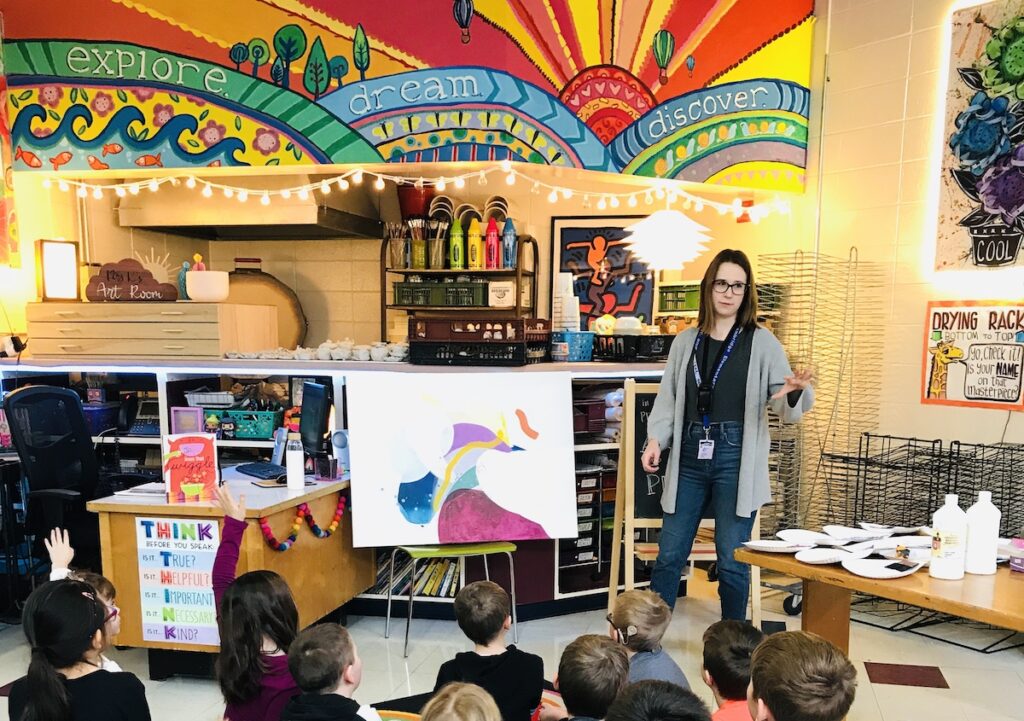
Want to know more about Katherine’s painting process? Watch her work here or check out her work on Instagram. According to her website, “She enjoys the freedom that painting gives her verses working on a computer—there is more room for things to flow instead of just hitting the undo button. Mistakes are good; they often turn into something great!”
After Katherine visited with our 2nd graders, it was time for our students to try their hand at creating their own intuitive art. Here is the process our students used to create their beautiful work.
Follow these steps to create art from the heart:
Remember, there are so many ways to allow for explorative art play with this project.
1. Introduce an inspirational artist (or a few!)
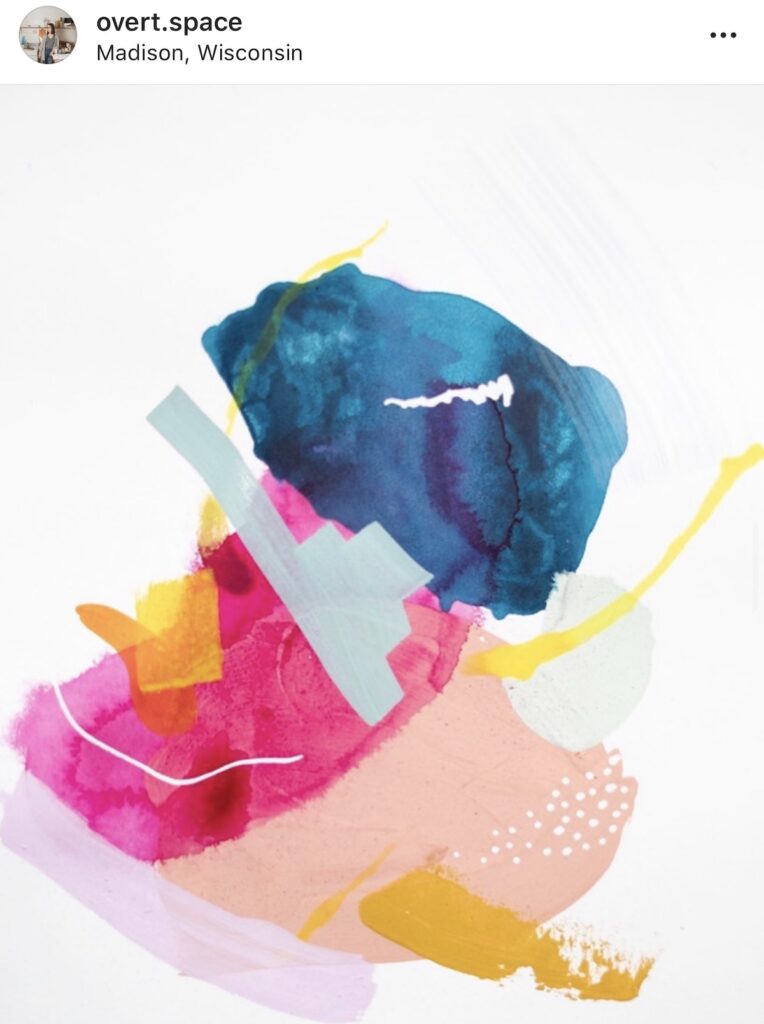
In our case, we obviously used the work and connection to Katherine as our artist inspiration. Check out these other talented abstract artists you may want to introduce to your students.
- Amira Rahim @amirarahimart
- Sevy Marie Eicher @sevymarieart
- Roma Osowo @roma.artist
- Amina Mucciolo @studiomucci
- Muzae Sesay @muzae
- Juliana Lupacchino @ju._lu
- Mich Miller @michmillerprint
- Monica Janes @monicajanesfineart
2. Lay down some puddly watercolor base layers.
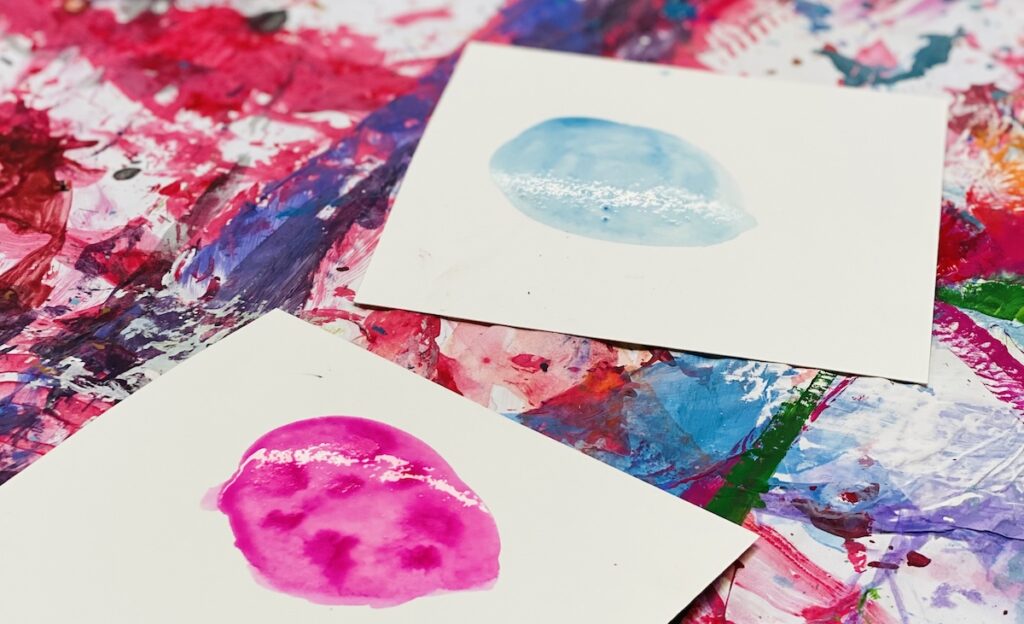
During this step, each student had two thick sheets of square paper. At the beginning of class, artists picked two colors of watercolor to create puddles. They used a variety of watercolor techniques such as wet on wet, salt, and dripping. Students were encouraged to play and experiment with what their watercolor could do, letting their heart drive their artmaking process.
3. Start layering paint on top of watercolor layers.
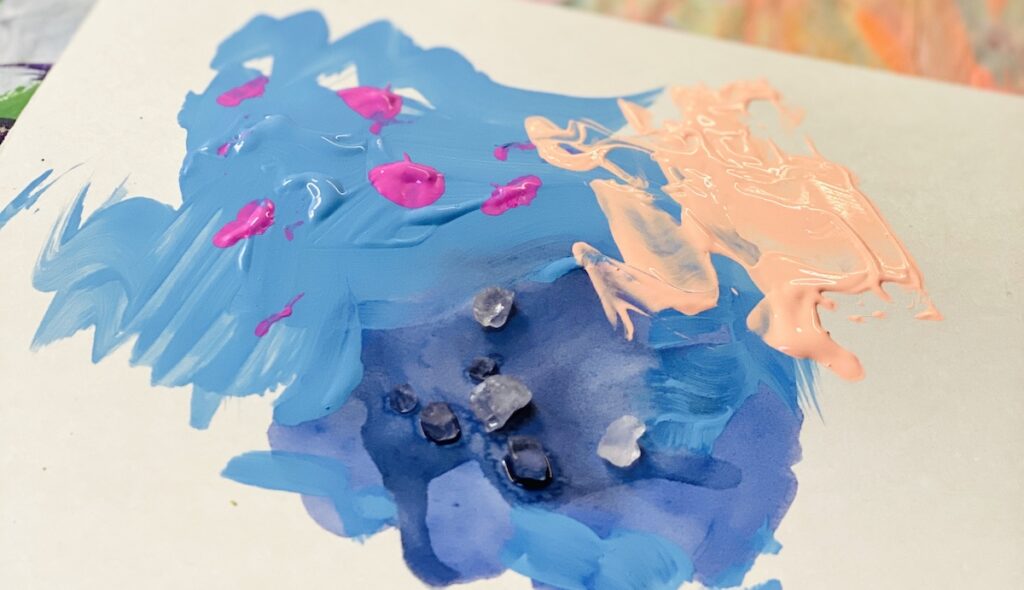
For this step, I set out lots of mixed containers of thick, colorful paint. Artists could choose one container at a time and slowly add colored splotches, marks, and lines using a thick scraping tool made from cut cardboard. I reminded students to go slow and be intentional about their choices. I also reminded them that each choice they made was a great one.
4. Use white paint to “mask” certain areas.
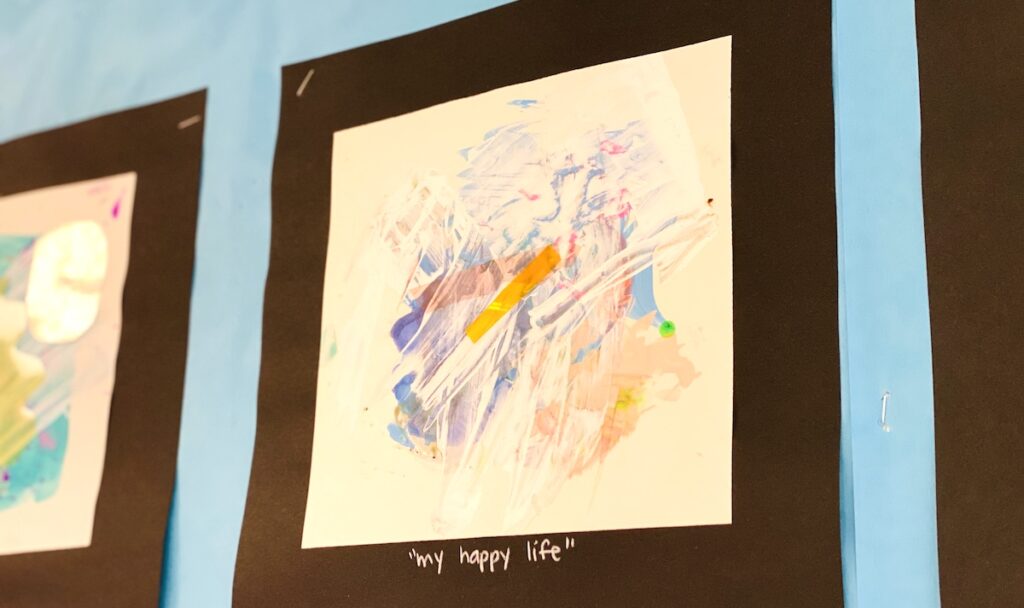
Using the same cardboard scraping tools, artists had the option to dip and drag white paint over a few dried areas of their project. Some artists wanted to leave their paintings sans “milk,” but we did offer this masking as an option, as it was a method Katherine uses to bring attention to certain areas of her paintings.
5. Adhere the transparency layers and final collage details.
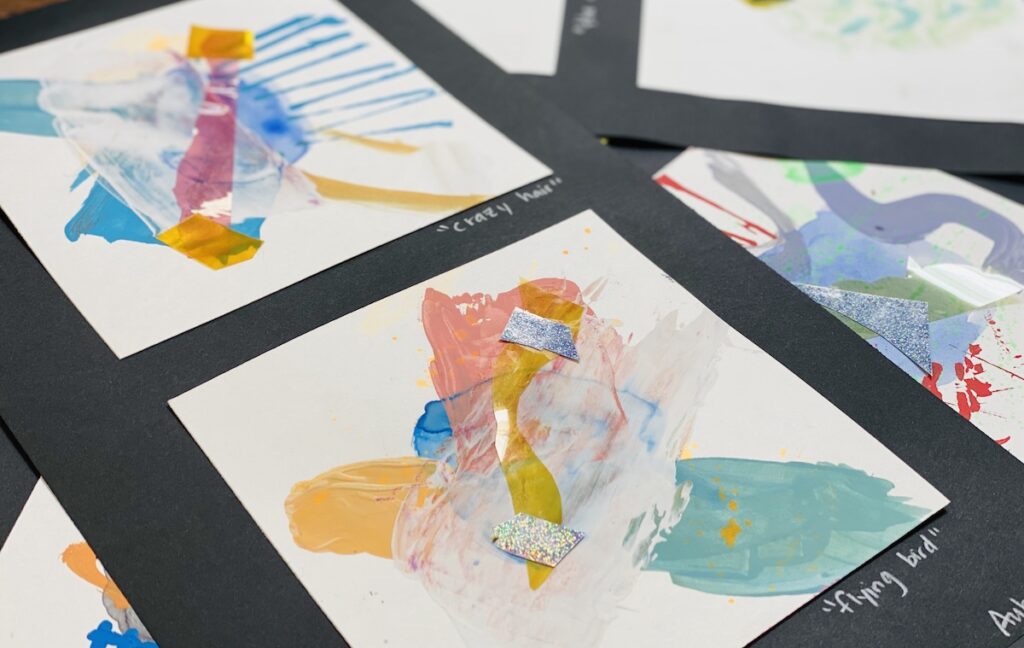
Katherine prints her own pastel plastic transparencies, but you could easily create your own with overhead colored projector plastic, clear tape, or thick plastic cellophane. Since it’s tricky to glue slippery plastic to a painting, students were encouraged to glue down and “trap” the transparency with thicker paper. The transparencies were usually cut into an organic shape, and sparkle papers or messy mat papers worked perfectly as part of a small “trapping” collage detail.
6. Title your work.
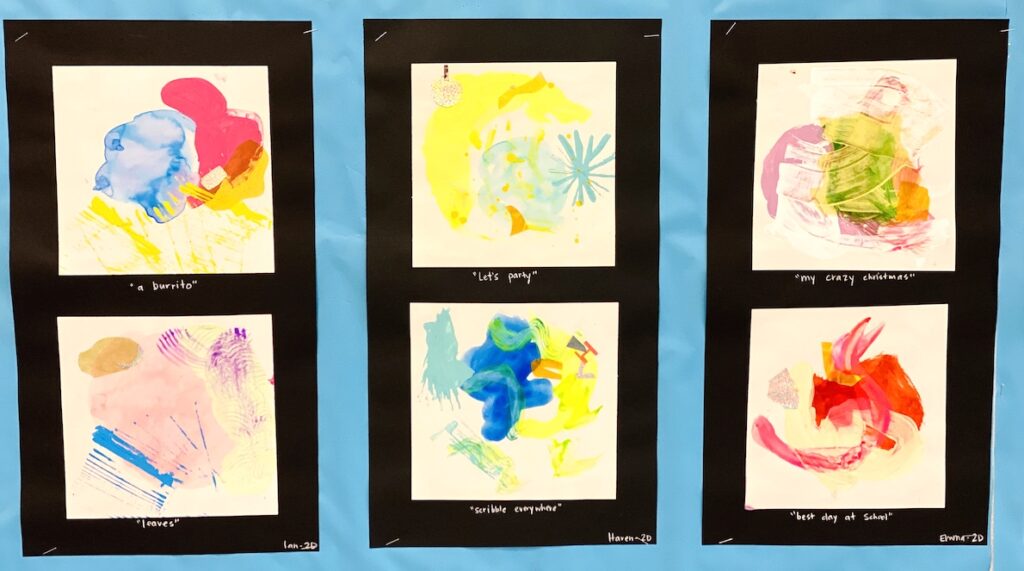
Intuitive art doesn’t need to look like a specific thing. It can represent more of a feeling than a literal object. Creating titles for expressive pieces is a beautiful way to get a sneak peek into your student’s mind.
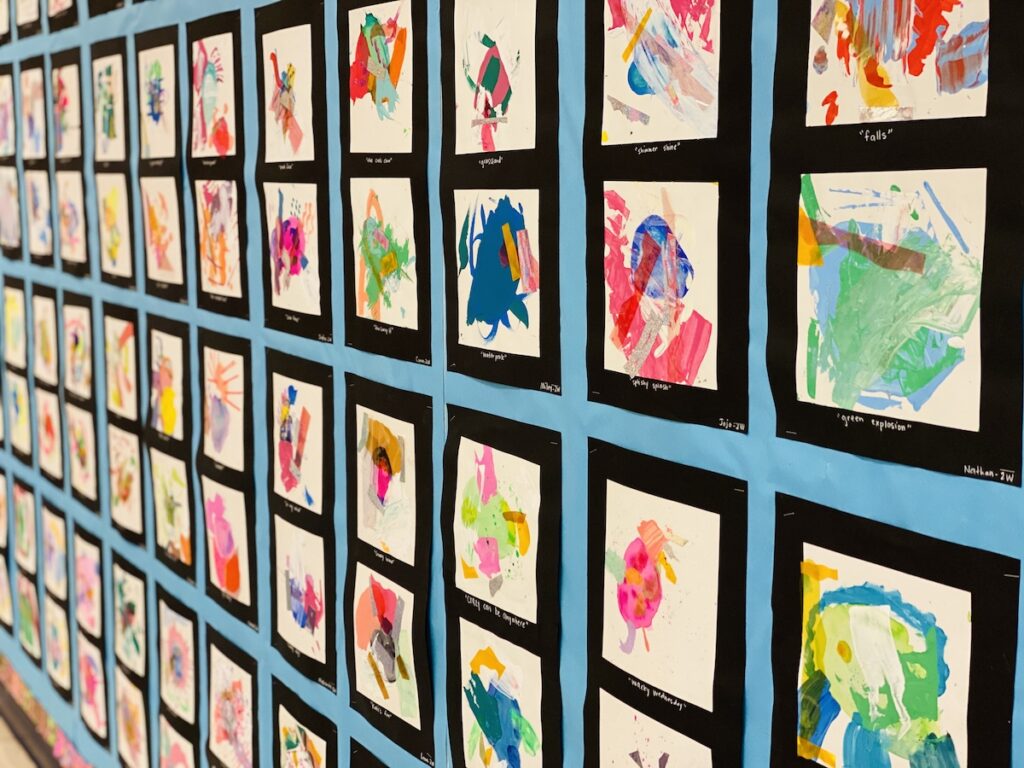
Return to Learn with The Art of Education University
There is no right or wrong way to create or begin working with abstract art. There are so many ways to create expressive art! Try introducing your artists to one of the many playful artists who are already following their hearts to create intuitive art. The playfulness and openness of working with abstraction will allow your students to not only engage with the materials, but also their own emotions and feelings.
What do you find is the best part of creating non-objective art with students?
What other artists are inspirational abstract artists?
Why is it important for students to be exposed to all kinds of artist processes?
Magazine articles and podcasts are opinions of professional education contributors and do not necessarily represent the position of the Art of Education University (AOEU) or its academic offerings. Contributors use terms in the way they are most often talked about in the scope of their educational experiences.

